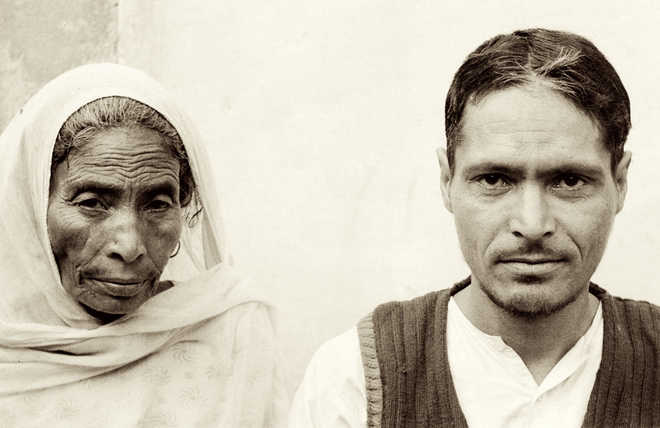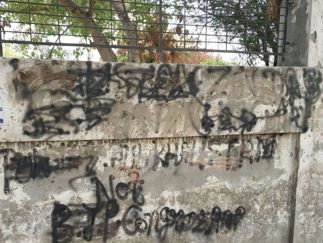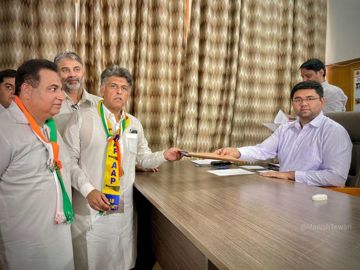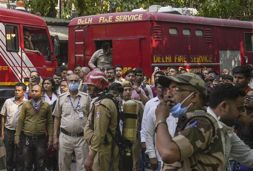
Speaking for others: Lal Singh Dil's poetry captures the sense of alienation that marginalised sections of the society usually feel
Raj Kumar
Lal Singh Dil (1943–2007) lived and died as a Dalit poet. Even though his poetic sensibilities and worldviews are of high qualities which can be compared with any great poet of the world, his poetry has never been taken seriously either by academics or by the common readers till recently. That is because Dil happens to come from a particular social background which is considered to be ‘low’ by the Indian upper castes. But Dil is not alone to suffer the ills of caste stigma. Most Dalit writers and poets across India have to face these discriminations.
Exclusion, Deprivation and Nothingness: Lal Singh Dil, Selected Poems translated by Dr Trilok Chand Ghai, a former Professor of English, Delhi University, captures the sense of alienation Dil and others such marginalised sections have felt.
Dil came from a marginal background. Therefore, his poetry speaks about the way Dil tries to negotiate between his marginal self and caste-based Indian society. His poetry is about the rural poor, tribal people, marginal farmers, women labourers, domestic workers and prostitutes. Dil’s poems speak on their behalf — the way they live in society and face realities in their everyday life.
Ghai, writes, “The modern urban world, as well as the world of wealth or even minimal affluence, is almost completely absent from Dil’s poetry, as also from his imagination. His poetry delineates mostly the lives of people for whom modernity and urban life are non-existent, or almost irrelevant, even as a dream. Most of them belong to the landless Dalit and tribal communities invisible in the mainstream media, and until recently in history and literature.” (p. 16)
Lal Singh Dil’s poetry is a representative voice of the voice-less millions who continue to be without voice even today because of their social situation. However, Dil has sought to break the culture of silence by speaking on their behalf. Having come from a marginalised community of Punjab, a Ramdasia Chamar whose traditional occupations was to remove the carcass, skin the dead animals, sweep the village roads, etc. Dil’s struggle to get an education was a great effort to go against the grain of the caste society. His attempt to write poetry is definitely a radicalisation of Dalit subjectivity.
It symbolises how the powerless poor is now trying to become a part of the power structure with his creative articulation. Dil has several poetry collections to his credit: Sutlej Di Hawa (Breeze from the Sutlej, 1971), Bahut Saarey Suraj (So Many Suns, 1982), Satthar (A Sheaf, 1997), Ajj Billa Phir Aaya (Billa Came Again Today, 2009), etc.
Dil’s revolutionary poems have given him a bit of ‘power’ in the traditional caste-based society. Dil, as a revolutionary poet, is performing certain social and cultural acts which were not possible for Dalit masses earlier.
Dil, of course, is one among many Dalit poets and writers who have symbolically made a niche in Dalit history and literature. He is in the league of many distinguished Dalit poets whose poetic sensibilities are far more meaningful and nuanced than many of the upper caste Indian poets. Namdeo Dhasal from Maharashtra, Bichitranand Nayak from Odisha and Kalyan Rao from Andhra Pradesh are few names whose Dalit sensibilities can match with that of Dil’s poetry.
Dil’s poems are also writing a revolution. The poems speak about the marginal lot who are exploited and oppressed in the name of tradition, custom and religion. Dil questions these ‘categories’ and by rejecting them tries to celebrate the spirit of equality and freedom which can be understood as Dalit assertion. Therefore, every poem which Dil writes has a discursive power to replace the traditional power structure. Dil, by writing about the marginal, the poor, the lowliest of the low, the prostitutes, the deprived, etc., makes efforts to put the peripheries in the centre of his narrative. This is a matter of commitment of those who are writing from the below.
Such an act of commitment we rarely find in the writings of those who come from the above because they hardly question the status quo of the caste society. It is in this sense that Dil’s poems can be called the poems of commitment. His commitment to the idea of equality and justice is unique. That is why Dil’s poetry is special.
Dil’s poetry is also special because he tries to see his ‘caste position’ as primacy without, of course, forgetting his class position. Words, such as, fire, bloodbaths, sickle and hammer, red dust, the big ball of the sun, flames rose like lava, etc., in his poems give us an impression that he is a progressive/Marxist/Naxalite poet.
This may be partially true. The way Dil raises questions of caste in his poems makes us believe that he is primarily a Dalit poet whose yearning for freedom has to be understood as the Dalit project for emancipation in the caste-based society. There is no doubt that Dil’s poetry is a distinct Dalit voice which gives a new direction to Dalit movement and Dalit literature in India.



























